Last Updated on January 9, 2023 by a Friendly Gardener
Most people opt for houseplants to bring a bit of greenery into their homes and offices. A few popular plants like the Peace Lily will flower when cultivated inside, but none can compete with the stunning Gloxinias. This is a hybrid houseplant appreciated for its large vibrantly colored flowers that are exceptionally decorative wherever they are positioned. The Gloxinia is also referred to as “Florist’s Gloxinia”.
Gloxinia blooms that are bell-shaped and they grow upright toward the sky. Botanically, the Gloxinia is called the Sinningia speciosa and finds its native habitat in Brazil. Thanks to transport to England more or less in 1815, it is now appreciated globally.
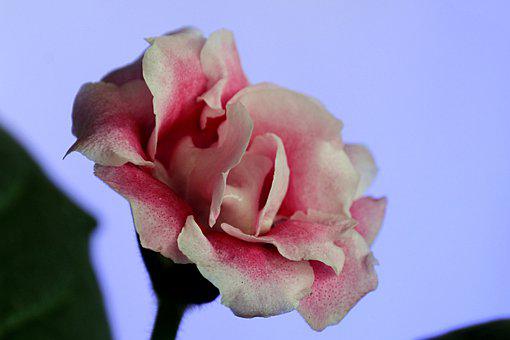
Members of the Gesneriaceae family are indirectly related to the African Violet that belongs to the same family. However, whereas the African Violet flowers throughout the entire year, the Gloxinia will experience periods of dormancy and growth, and resembles more closely the flowering Cyclamen in terms of seasonal habits.

The Gloxinia species has a generous choice of hybrid varieties to select from and there are multiple colors available that include gold, burgundy, purple, pink, white, and vivid red. Some Gloxinia cultivars feature lighter and darker shades of a single color while other hybrid varieties have speckled petals or colored blooms with characteristic white edging. Large oval foliage features a hairy textured surface with scalloped edging.
Gloxinia Plant Care
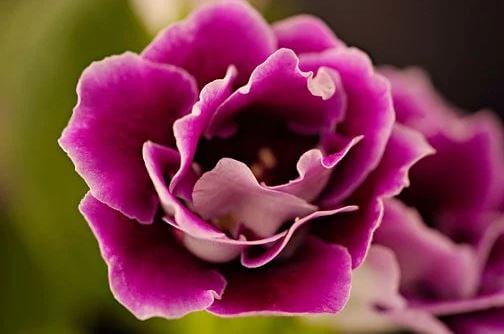
A Gloxinia prefers and thrives in warm room temperatures measuring from 65° to 75° F. temps should not fall below 60°F. during the growing season. During dormancy, the plant will die back similar to cyclamen. While the plant sleeps, its tubers need to be situated in a dry cool spot where temperatures never exceed 50°F until the Gloxinia reawakens.
Soil
Gloxinia prefers a growing medium that is a bit acidic, ideally with a pH measuring between 5.5 and 6.5. African Violet or Gardenia potting mix is a good choice for indoor cultivation. The soil bed needs to be kept moist but must not appear soggy, so drainage should be a consideration. You can also opt for a potting mix with peat and perlite as well.
Light
The Gloxinia, like most houseplants, loves bright indirect light, so if you want to dress up a window, choose one that faces north or east. For West or south-facing windows, avoid placing this plant directly on a window sill opting instead for a spot that is several feet from the window. Direct sunlight exposure will harm and damage this plant.
Water

Gloxinias require soil that is maintained evenly moist but with excellent drainage. This plant is susceptible to root rot. A good practice is to place your Gloxinia in a sink or in a dish of water for fifteen minutes and allow the plant to soak up whatever water it requires. After 15 minutes remove the plant from the sink or dish and drain the excess water. This prevents wetting leaves and flower buds that are sensitive and a bit delicate. Always water your Gloxinia with room-temperature or tepid water.
When the Gloxinia enters dormancy, the blooms will die back. At this point, you should reduce watering considerably. If foliage withers, stop watering entirely and let your plant sleep. A Gloxinia can remain dormant from two to four months so be patient. As soon as new growth sprouts, resume watering. Flowers will appear in three to four months.
Humidity
As native plants of South American rainforests, the Gloxinia wants humidity levels above 70 percent. To improve indoor humidity wherever your plant is located, use a space humidifier or a pretty pebble tray placed beneath your plant. If you have multiple indoor houseplants, you can group them together as the plant transpiration will increase localized humidity levels. It is recommended that you mist it to prevent fungal infections.
Feeding
Feed your Gloxinia plant monthly during the growing season using a liquid fertilizer that is high in phosphorous. Dilute the fertilizer to half-strength. Standard fertilizers are not recommended as they usually contain too much nitrogen. When the flowers fade, stop feeding the plant until dormancy finishes and shows new growth.
Repotting
The Gloxinia should be repotted during the dormancy period only when all the leaves have dropped. The plant’s tuber can be transplanted into a pot one size larger once new growth has begun. Use a potting soil mix indicated for African Violets.
Pruning
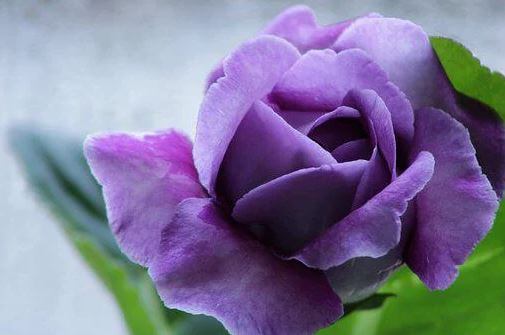
Pinching tips is better than pruning if you want to prolong the flowering season. Flowers live for approximately a week. By pinching spent flowers as soon as they pass, flowering will continue.
Pests, Diseases, and Problems
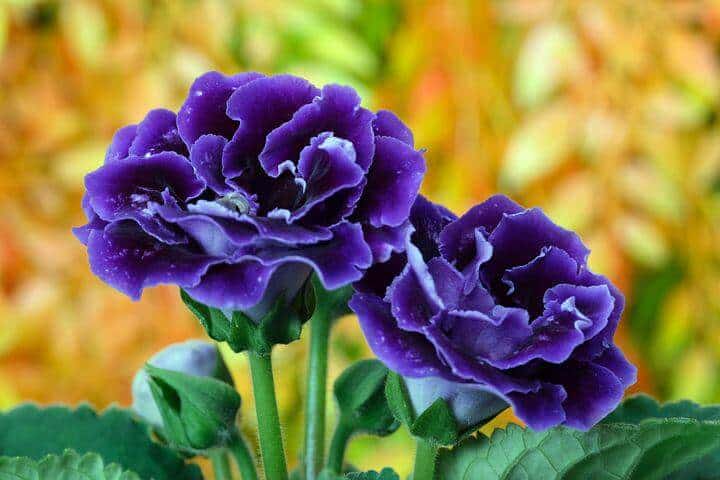
When on the lookout for pests, Gloxinias are particularly susceptible to fungal gnats and spider mites. Neem oil or insecticidal soap treatment is suggested if you see evidence of a pest infestation.
Gloxinias are highly sensitive plants when it comes to overwatering. They do not do well in soggy soil. They are somewhat delicate so when handling them, be gentle to avoid breaking stems, flowers, and leaves. If plant leaves develop white rings this is an indication that you have used cold water instead of tepid or room-temperature water on your plant.
Buds that fall off without opening indicate exposure to a hot or cold draft. Gloxinias should be positioned away from drafty windows, doors, and air conditioning and heating vents.
Yellow leaves indicate overwatering or excessive exposure to sunlight.
First-time Gloxinia owners often presume that their plant is dead and perhaps dispose of it when it enters dormancy. The seasonal dieback and dormancy, just like the cyclamen, ask for the patience of the plant’s owner. You’ll have a plant that regenerates with the arrival of the growing season and that has the capability to flower for years to come.
Toxicity and Pets
According to the ASPCA, Gloxinia or Sinningia speciosa is non-toxic to cats and dogs.
Gloxinia Propagation
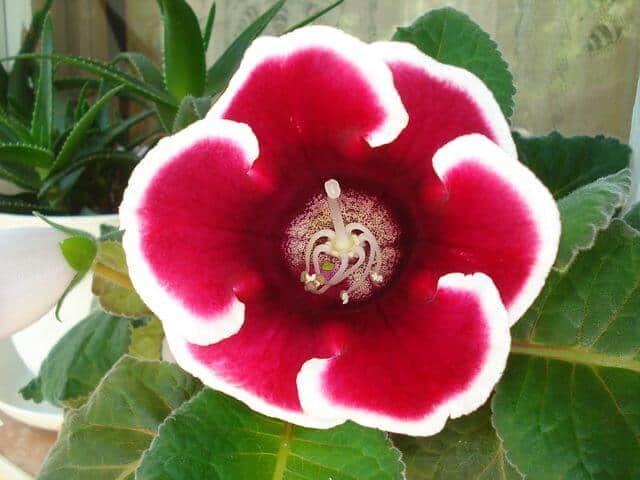
Propagating your Gloxinia is easiest with leaf cuttings, just like the African Violet. Leaves, as well as stem cuttings, are both viable propagation methods. The Gloxinia’s tubers can also be divided to create new Gloxinia plants.
For leaf-cutting propagation choose a healthy partially mature leaf from the mother plant. Remove the leaf by cutting the leaf off diagonally where the petiole meets the plant’s principal stem. Trim off the leaf’s upper half to interrupt growth. This will contain stress on the newly forming roots. Dip the cut leaf end in rooting hormone coating it. Place the cutting approximately an inch deep into moistened potting soil.
Cover your cutting with plastic to maintain humidity constant and place it in a warm location with generous indirect bright light. New seedlings will sprout from the soil bed within a few weeks. Once new leaves reach an inch in length, transplant your cutting to a new container and care for it the same as a mature Gloxinia plant.
In Conclusion

For a burst of vibrant color in your home, the Gloxinia is a striking flowering ornamental plant. It requires moistened soil, good humidity, and indirect light, but will reward you with a beautiful color for most of the year except for the required dormancy rest.

